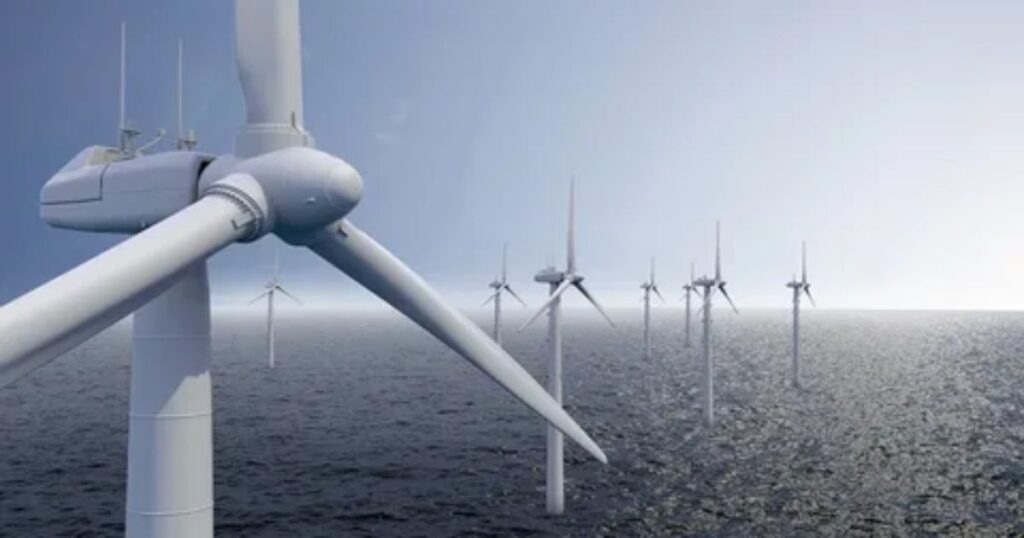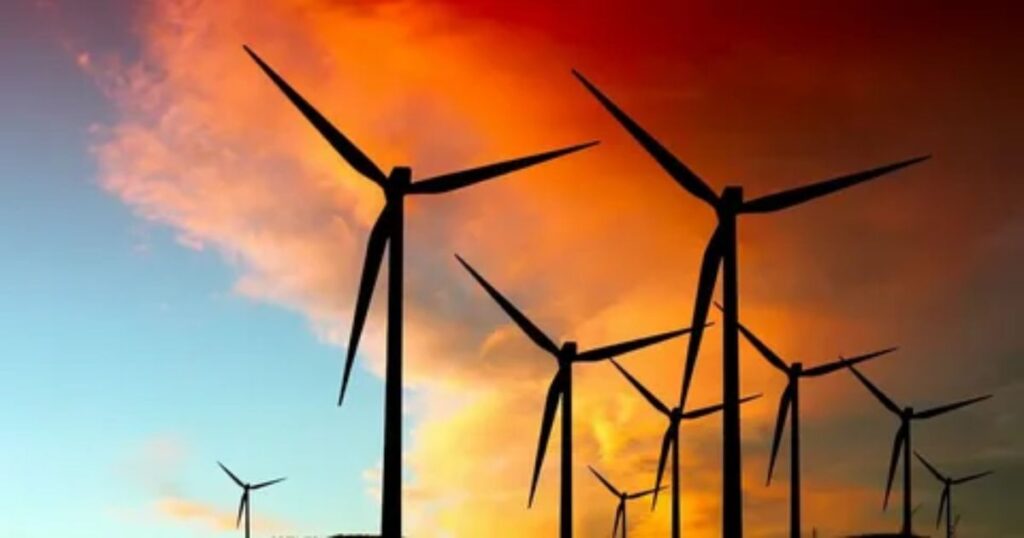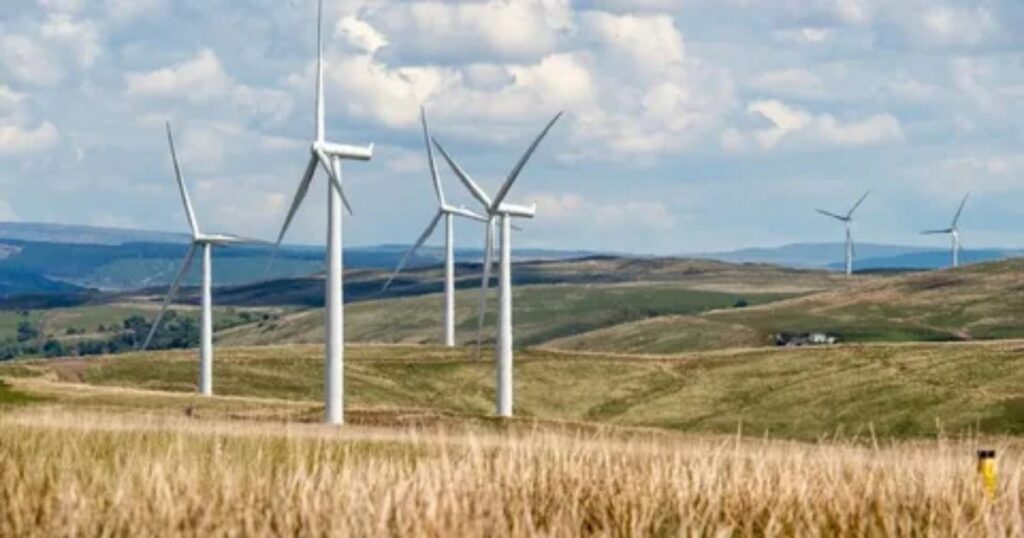Wind power is becoming an increasingly vital component of the global energy landscape. The growth of wind energy projects is fueled by various financing methods that enable developers to bring these projects to fruition. Understanding the types of wind power financing is crucial for stakeholders looking to invest in or develop wind energy projects. This article delves into the diverse financing methods, advantages, and challenges of Wind power Financing.
The concept of wind power financing involves securing the funds necessary to develop, construct, and operate wind energy projects. It encompasses a range of financial strategies, each designed to meet the unique needs of a particular project. It is important for developers to choose the right type of financing to ensure the project’s success.
It should be noted that wind power financing can be complex, involving multiple stakeholders, including banks, investors, and government bodies. The financing structure must be tailored to the project’s size, location, and regulatory environment.
Government Grants And Subsidies
The government plays a pivotal role in promoting renewable energy through grants and subsidies. These financial aids are designed to reduce the initial capital expenditure required for wind power projects.
- Governments worldwide offer various incentives to encourage wind power investments. These incentives include tax credits, production incentives, and capital grants.
- Grants can significantly lower the cost of development, making projects more financially viable.
- Subsidies, such as feed-in tariffs, guarantee a fixed price for the electricity generated, ensuring steady revenue for developers.
Challenges And Considerations
- Securing government funding can be a lengthy process with strict eligibility criteria.
- Dependency on subsidies can pose a risk if government policies change.
- Understanding regional and local government policies is essential for maximizing benefits.
It is vital to keep track of changing governmental policies, as shifts in administration can alter the landscape of available grants and subsidies. Despite these challenges, government support remains a cornerstone of wind power financing.
Equity Financing For Wind Power
Equity financing involves raising capital through the sale of shares in the wind power project. This method is particularly common in large-scale projects where substantial capital is required. Equity investors typically include private equity firms, institutional investors, and sometimes, strategic partners with expertise in renewable energy. Investors receive ownership stakes in the project, which entitles them to a share of the profits. No obligation to repay investors if the project underperforms, as returns are based on the project’s success. Attracts investors with a long-term interest in renewable energy.
Dilution of ownership for the original developers. High expectations for returns can pressure the project to perform well financially. The process of raising equity can be time-consuming and requires robust legal and financial frameworks. Equity financing is a powerful tool for raising capital, especially when paired with other financing methods, such as debt financing or government grants. It is essential for developers to carefully consider the implications of ownership dilution and align interests with potential investors.
Debt Financing For Wind Power

Debt financing is one of the most traditional methods of raising capital for wind power projects. It involves borrowing funds that must be repaid with interest over time. Common sources include commercial banks, development banks, and specialized renewable energy lenders. Debt can be structured as senior or subordinated, with senior debt taking priority in repayment. Retains ownership control, as lenders do not receive equity stakes. Fixed interest rates provide predictability in repayment schedules.
Requires a strong credit rating or significant collateral to secure loans. Debt repayment obligations can strain cash flow, particularly in the early stages of the project. Interest rates can vary, affecting the overall cost of financing. Despite the risks, debt financing remains a popular choice due to its ability to leverage large sums of capital while maintaining control over the project. Careful financial planning is essential to manage repayment schedules and mitigate risks associated with fluctuating interest rates.
Power Purchase Agreements Funds
Power Purchase Agreements (PPAs) are long-term contracts between the wind power developer and an electricity buyer, typically a utility company or large corporate entity.
Key Aspects of PPAs
- The buyer agrees to purchase a specified amount of electricity at a predetermined price over a set period, often 15-25 years.
- PPAs provide stable revenue streams, which can be used to secure further financing.
Advantages of PPAs
- Reduces market risk by locking in electricity prices.
- Attracts investors by demonstrating long-term financial viability.
- Can be bundled with other financing methods to improve the project’s financial structure.
Challenges and Considerations
- Negotiating PPAs can be complex and time-consuming.
- The agreed-upon price may be lower than the market price in the future, limiting potential revenue.
- Long-term contracts can limit flexibility in adapting to market changes.
PPAs are a cornerstone of wind power financing, providing security and predictability for both developers and investors. The ability to negotiate favorable terms is critical to maximizing the benefits of PPAs.
Green Bonds Funds For Wind Power
Green bonds are debt securities issued to raise capital for projects with environmental benefits, including wind power. Investors in green bonds are typically institutional investors, such as pension funds and insurance companies, seeking to align their investments with environmental, social, and governance (ESG) goals. Green bonds are similar to traditional bonds but with the added assurance that the funds will be used for environmentally friendly projects. Attracts a broad range of investors interested in sustainable projects.
Can enhance the issuer’s reputation and demonstrate a commitment to sustainability. Often come with tax incentives or lower interest rates. Requires rigorous reporting and verification to ensure the funds are used as intended. May involve higher issuance costs due to the need for third-party certification. Green bonds represent a growing trend in sustainable finance, offering a way to tap into the growing demand for environmentally responsible investments. Their popularity is likely to continue rising as more investors prioritize ESG considerations.
Tax Equity Financing For Wind Power

Tax equity financing is a specialized form of financing where investors receive tax benefits in exchange for providing capital to wind power projects. Investors, often large corporations with significant tax liabilities, invest in the project to take advantage of tax credits, such as the Production Tax Credit (PTC) or Investment Tax Credit (ITC). These investors are typically not interested in owning the project long-term but are attracted by the tax incentives. Provides a crucial source of capital for projects, especially in the United States. Allows investors to offset their tax liabilities while supporting renewable energy.
The structure of tax equity deals can be complex and requires specialized legal and financial expertise. Changes in tax laws can impact the availability and attractiveness of this financing method. Tax equity financing is particularly popular in the U.S., where federal tax incentives for renewable energy are a significant driver of wind power development. Developers must work closely with tax advisors to structure deals that maximize the benefits for all parties involved.
Crowdfunding For Wind Power
Crowdfunding has emerged as an innovative way to finance wind power projects, particularly smaller, community-based initiatives.
- Developers raise small amounts of capital from a large number of individuals, typically through online platforms.
- Crowdfunding can take the form of donations, loans, or equity investments.
Advantages
- Engages the local community and builds public support for the project.
- Can be used to supplement other forms of financing.
Challenges
- Raising significant amounts of capital through crowdfunding can be difficult.
- Regulatory requirements vary by country and can complicate the process.
Crowdfunding offers a unique way to democratize the financing of wind power projects, allowing ordinary people to participate in the transition to renewable energy. While it may not be suitable for large-scale projects, it is an effective tool for smaller, community-focused initiatives.
Private Investments And Partnerships For Wind Power
Private investments and partnerships are crucial in the development of wind power projects, especially those requiring significant capital outlays. Venture capital and private equity firms are common sources of funding for early-stage and large-scale projects. Strategic partnerships with companies in the energy sector can provide not only capital but also expertise and resources. Access to large amounts of capital and industry expertise. Partnerships can help mitigate risks and share the burden of project development.
Aligning the interests of all partners can be complex and may require detailed agreements. Private investors often seek high returns, which can influence project decisions. Private investments and partnerships are integral to the wind power industry, providing the necessary capital and expertise to bring large projects to fruition. Successful partnerships require clear communication and alignment of goals to ensure all parties benefit from the collaboration.
Venture Capital And Angel Investors

Venture capital (VC) and angel investors play a critical role in financing early-stage wind power projects, especially those with innovative technologies or business models.
- VCs typically invest in exchange for equity, while angel investors may offer a combination of equity and mentorship.
- These investors are often willing to take on higher risks in exchange for the potential of significant returns.
Advantages
- Provides capital for innovative and high-risk projects that may not qualify for traditional financing.
- Can accelerate the development of new technologies in the wind power sector.
Challenges
- High expectations for returns can put pressure on project developers.
- Investors may seek a significant degree of control or influence over project decisions.
VC and angel investing are vital for fostering innovation in the wind power industry, supporting projects that push the boundaries of current technology. Developers must be prepared to meet the high expectations of these investors while retaining control over their projects.
Frequently Asked Questions
What is the most common type of wind power financing?
The most common type of wind power financing is debt financing, where developers borrow funds from lenders and repay them over time with interest.
How does tax equity financing benefit investors?
Tax equity financing benefits investors by allowing them to receive tax credits in exchange for their investment, which they can use to offset their tax liabilities.
Can small wind power projects be funded through crowdfunding?
Yes, crowdfunding is an effective way to finance smaller, community-based wind power projects by engaging local communities and raising small amounts of capital from a large number of people.
What are the risks associated with equity financing in wind power projects?
The risks associated with equity financing include ownership dilution for the original developers and high expectations for returns from investors, which can pressure the project to perform well financially.
Conclusion
The financing of wind power projects is a complex and multifaceted process involving various stakeholders, from government agencies to private investors. Each type of financing has its unique advantages and challenges, making it essential for developers to carefully consider their options and develop a tailored financial strategy. By leveraging a combination of these financing methods, wind power developers can secure the necessary capital to bring their projects to life and contribute to the global transition to renewable energy.
